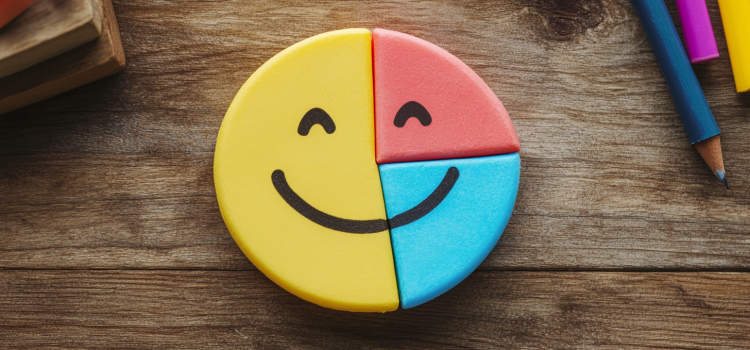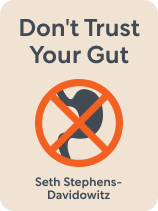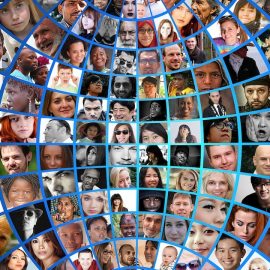

This article is an excerpt from the Shortform book guide to "Don't Trust Your Gut" by Seth Stephens-Davidowitz. Shortform has the world's best summaries and analyses of books you should be reading.
Like this article? Sign up for a free trial here.
Can data science actually reveal what makes us happy? Have you been looking for joy in all the wrong places?
According to Seth Stephens-Davidowitz, happiness data can lead you to find joy in your own life. In Don’t Trust Your Gut, he reveals that objective information from millions of people can map out which activities truly bring joy and which ones leave us miserable—challenging our intuitions about happiness.
Keep reading to discover the science-backed path to a happier life.
Seth Stephens-Davidowitz on Happiness Data
According to Seth Stephens-Davidowitz, happiness doesn’t have to be elusive. He argues that big data can offer a guide to happiness by correlating what people do and how they feel on a massive scale. He finds that certain behaviors tend to bring us down while others objectively improve our spirits, suggesting that the path to happiness isn’t that complicated at all.
In this case, the happiness data Stephens-Davidowitz refers to comes primarily from the Mappiness smartphone app, which prompted millions of willing participants to record their daily activities as well as their emotional states. The result was a gigantic pool of information that data scientists have been able to mine so they can answer, scientifically, how to be happy.
(Shortform note: The happiness data collected by Mappiness is 100% self-reported, but while Stephens-Davidowitz accepts it at face value, other researchers question to what degree people can accurately measure their mood. For instance, Gallup polling data shows that women report higher levels of overall happiness than men, but when asked about specific life circumstances, the tables turn and they report less happiness than men. Psychologists have other tools beside self-reports—they can measure biological responses and behavioral indicators, such as changes in hormone levels or how often people smile. However, these tools are hard to use outside the lab and their results are uncertain for various reasons.)
Why We’re Miserable
The reason we need data to tell us about happiness is that the human brain is notoriously bad at determining what will make us happy or not. Stephens-Davidowitz points to specific mental errors discovered by psychologist Daniel Kahneman that warp how we remember our emotions and thus how well we can predict them. The first is that our brains ignore how long an experience lasts, pleasant or otherwise. The other is known as the “peak-end rule,” which states that, when we look back on an event, we judge whether we were happy or not by how we felt at the most intense moment and how we felt at the end. As a result, our memories are skewed, so we need to look at data collected during happy and unhappy times as they happen.
(Shortform note: While rooting out what makes us happy is Stephens-Davidowitz’s focus, it wasn’t the direct aim of Kahneman’s research. Instead, Kahneman sought to overturn the prevailing economic theory of his time, which claimed that people make decisions based on reason and probability, not emotion. In The Undoing Project, Michael Lewis recounts how Kahneman and his research partner, Amos Tversky, proved that human beings are far more irrational and emotionally driven than economists had previously believed.)
What the numbers reveal is that we spend most of our time doing things that objectively make us unhappy, such as chores, driving to work, and worst of all, work itself. According to Stephens-Davidowitz, work ranks at the bottom of the happiness scale, with nothing but illness listed as more unpleasant. For most of us, work is a necessity, and one might argue it leads to happiness later because of the money you earn. However, the research Stephens-Davidowitz cites is clear that money’s effect on happiness is very slight—you’d have to increase your salary by a lot to increase your happiness even by a little.
(Shortform note: Stephens-Davidowitz accepts these rankings at face value, which assumes that certain actions and events cause unhappiness. However, this may not be so. In Happy, Derren Brown illustrates this through the lens of Stoic philosophy, which says that happiness and suffering don’t result from what happens to us, but instead come from the stories we tell ourselves about those events. According to Brown, if you blame work for your unhappiness, that’s an internal judgment you’re making and not an intrinsic property of your job.)
Stephens-Davidowitz also explains that we’re often wrong about what types of recreation make us happy. In the Mappiness data, “relaxing” pastimes such as watching television, playing video games, and reading books produced fewer feelings of enjoyment than expected. Meanwhile, scrolling through social media produces a decidedly negative effect on happiness—Stephens-Davidowitz references one study that showed that the best way to benefit from social media is to quit it. Doing so improves your emotional state in a way that’s comparable to therapy.
(Shortform note: Though Stephens-Davidowitz connects “less enjoyable” recreation activities by virtue of their passive nature, there is another point of view. In Digital Minimalism, Cal Newport contends that our constant engagement with technology has led to a widespread decline in mental health due to “solitude deprivation.” He writes that when we spend less time alone with our thoughts, we miss out on the important benefits of quiet time, such as enhanced creativity, self-reflection, and problem-solving. Newport touts the emotional and cognitive value of taking a break from all outside input, which, like Stephens-Davidowitz’s list, includes reading books.)
How to Have a Good Time
Thankfully, there’s good news to go along with the bad. Analysis of the Mappiness data as well as other studies concur that there are clear and relatively direct ways to improve your overall happiness. In general, what the top-ranked happiness-boosting activities have in common is that they involve being active in some way, rather than passive forms of recreation.
1. Sexual intimacy easily tops the list of things that make people happier. Therefore, the data-driven methods Stephens-Davidowitz provides to empower you in your romantic life may arguably have the largest impact on your life satisfaction overall.
2. Cultural events and demonstrations, such as concerts, theater performances, and museum exhibits, are next on the happiness list. While these may not seem “active” at first glance, Stephens-Davidowitz points out that they all involve more deliberate engagement than staying home and staring at a screen.
3. Physical exercise and other active hobbies scored higher in the happiness data than study participants expected. Stephens-Davidowitz attributes this discrepancy to the energy cost these activities carry, but once you engage in them and afterward, your happiness undergoes a measurable boost.
4. Socializing with others boosts happiness, but with a certain caveat—not all social interactions are created equal. Stephens-Davidowitz explains that socializing’s effect on happiness depends on how strong your relationships are. Spending time with loved ones and friends gives you a stronger boost than interacting with strangers.
5. Being outdoors improves happiness, especially in conjunction with any other activity on this list.
Compounding Happiness
To make things even better, Stephens-Davidowitz argues that happiness is additive, so combining different pleasurable activities magnifies their impact. In other words, if attending a concert makes you happier, attending a concert with friends does even more. The Mappiness data backs up this argument by correlating people’s reported mental state with what they’re doing, where they are, and who they’re with. This compounding effect also helps alleviate situations that make you unhappy. For instance, being sick isn’t quite as terrible if you have a loved one with you giving support.
Stephens-Davidowitz concludes by suggesting that being satisfied with your life isn’t as hard as we often make it out to be. Happiness, after all, doesn’t come from dramatic but fleeting life events, achieving great success, or becoming really rich. According to the numbers, happiness comes from living an active life, finding things to do outdoors, and sharing our time with friends and those we love. While none of this is shocking news, he says, we have such a bad habit of looking for joy in the wrong places that we need data science to remind us of the truth.

———End of Preview———
Like what you just read? Read the rest of the world's best book summary and analysis of Seth Stephens-Davidowitz's "Don't Trust Your Gut" at Shortform.
Here's what you'll find in our full Don't Trust Your Gut summary:
- Why we should be using "big data" to help us analyze the outcomes of life decisions
- How to use data to select a lifelong romantic partner
- Which two decisions make the most impact on a child's development






